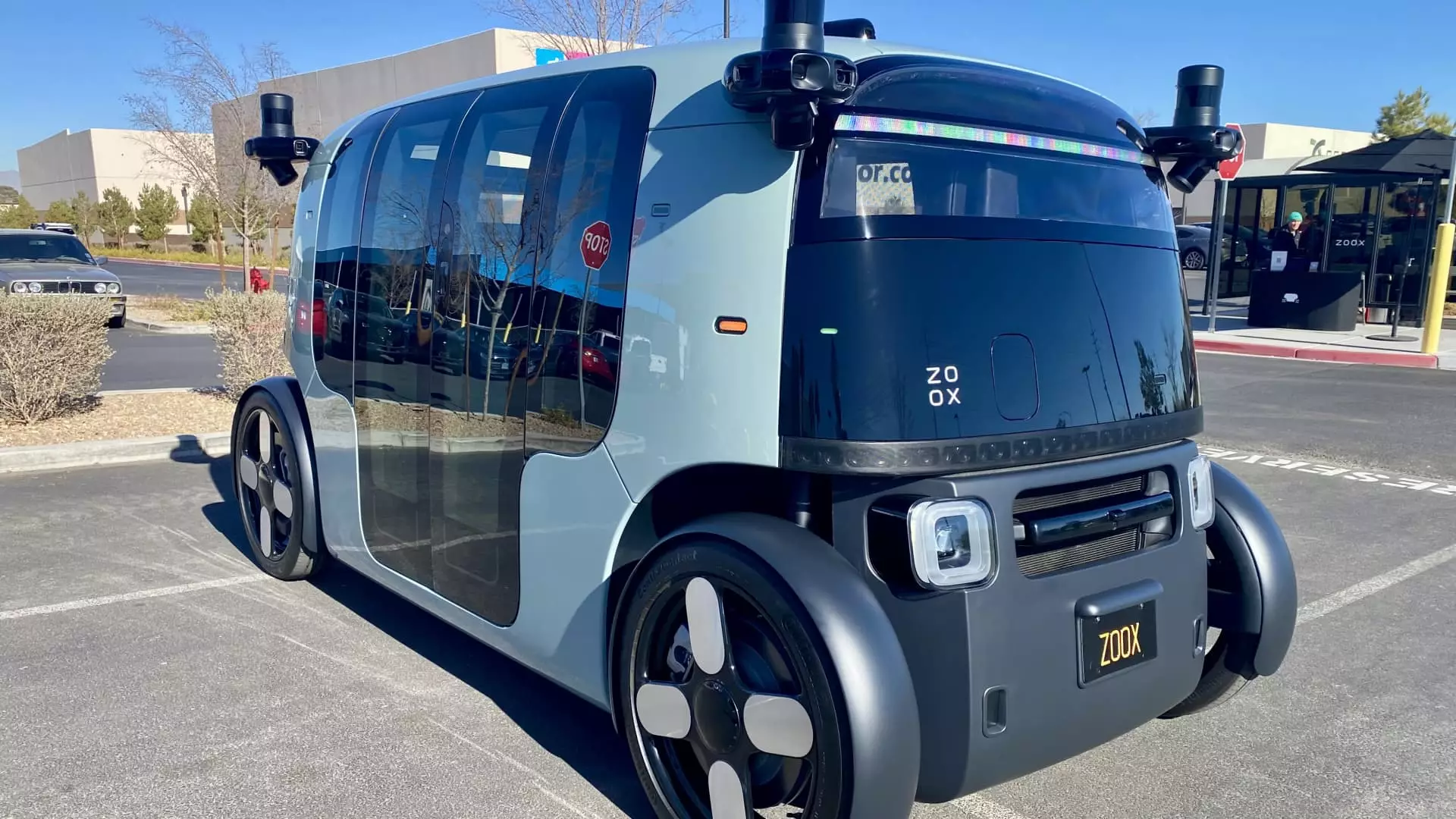As the autonomous vehicle landscape evolves, Amazon’s Zoox emerges as a beacon of innovation with its plans to enter the robotaxi market. This year is poised to be a defining moment for Zoox, which aims to transform urban mobility by launching a service that allows customers to hail fully autonomous rides. Co-founder and Chief Technology Officer Jesse Levinson articulated the company’s commitment to ramping up its operations and expanding its fleet significantly beyond the few dozen vehicles currently in service. Levinson’s excitement, coupled with a hint of urgency, was palpable during a recent demonstration in Las Vegas, where Zoox’s unique robotaxis navigate the bustling streets without traditional controls.
Zoox’s foray into this competitive market comes amid fluctuating investor sentiment towards autonomous technologies. Historic giants like General Motors and Ford have curtailed their self-driving initiatives, illustrating the turbulence that surrounds the industry. However, Zoox, acquired by Amazon for a striking $1.3 billion in 2020, plans to focus on broadening its operational reach. The firm has been running tests in cities such as Las Vegas, San Francisco, and its headquarters, Foster City, California, since early 2023, with aspirations to make Las Vegas its first commercial market.
Zoox presents an intriguing design philosophy that diverges from its competitors. Unlike Alphabet’s Waymo, which retrofits existing vehicles to become self-driving, Zoox’s robotaxi is a purpose-built model devoid of human driving controls. This unique structure has led to playful comparisons of the vehicle’s form to that of household appliances, showcasing its innovative yet simplified aesthetic. The vehicle features an ergonomic design conducive to social interaction, with seats that face each other, fostering conversations among riders. Critics might label the design as unorthodox, likening it to a “toaster,” but adherents believe it reflects a thoughtful approach towards reshaping the passenger experience.
As Zoox ramps up its testing in Las Vegas, the company plans to roll out an “Early Rider Program,” paving the way for broader public access later this year. Despite the absence of a conventional driver or internal manual controls, Levinson reassured potential customers regarding the vehicle’s autonomy, emphasizing robustness and reliability. Zoox aims to navigate complex driving scenarios while adhering to safety protocols, a challenge that previous leaders like GM’s Cruise have struggled with.
The journey ahead for Zoox is fraught with challenges, particularly regarding the regulatory environment surrounding autonomous vehicles. While Zoox has made significant strides technologically, the broader acceptance of driverless rides hinges on addressing pertinent safety concerns. The company is not alone in facing this scrutiny; competitors have also encountered regulatory hurdles that have stalled progress. Recently, GM’s Cruise was compelled to ground its fleet after a pedestrian accident raised questions about safety measures and operations. As Zoox prepares for its public debut, it must be vigilant and proactive in ensuring compliance with evolving regulations and consumer safety expectations.
Though the technology behind autonomous driving has progressed, questions linger regarding the commercial viability of these vehicles. The industry has experienced a reassessment of its business models, as the initial projections of swift scalability have proven overly optimistic. The robotaxi market is mired in uncertainty with steep operational costs, necessitating a thoughtful approach to fostering profitability. Levinson recognizes the need for careful scaling and responsible deployment, balancing the enthusiasm for innovation with the imperative for safety.
Competitive Landscape and Future Aspirations
In the context of increasingly fierce competition from established players like Waymo and emerging startups, Zoox must tread carefully. Waymo’s operations have matured to a stage where they conduct substantial numbers of rides in multiple markets, establishing a notable lead. Experts like Sam Abuelsamid highlight the maturity of Zoox’s technology, while maintaining reservations about the viability of its business model. As the company dreams of saturating major urban centers with its services by the end of the decade, it remains to be seen whether it can effectively carve out a niche amidst a rapidly changing landscape.
While Zoox strives to propel itself into the forefront of the autonomous driving sector, external factors will undoubtedly play a critical role in determining its success—or lack thereof. Other entities, such as Tesla and Uber, have made ambitious claims regarding their robotaxi aspirations but have faced hurdles that have delayed actualization. As Zoox prepares to introduce paid rides later in the year, it must navigate both the intricacies of technology and the labyrinth of public perception. The promise of a future where autonomous vehicles are a commonplace mode of transport hinges on companies like Zoox successfully charting this unchartered territory.
Zoox’s trajectory toward catapulting autonomous vehicles into everyday use will require ingenuity, robust safety measures, and adaptation to the complexities of market dynamics. As they navigate 2023 with burgeoning optimism, the question remains: Can Zoox’s autonomous dream become a tangible reality in an industry fraught with uncertainties?

